 1970 Plymouth Barracuda III Dimensions, Size & Specs
1970 Plymouth Barracuda III Dimensions, Size & SpecsMeasurements of the 1970 Plymouth Barracuda III, engineered for optimal performance and comfort
| Dimensions | |
|---|---|
| Length: | 4742 mm186.7 in15.6 ft |
| Width: | 1902 mm74.9 in6.2 ft |
| Height: | 1293 mm50.9 in4.2 ft |
| Trunk Capacity: | 167 liter5.9 cu ft |
| Weight Specifications | |
| Curb Weight: | 1495-1629 kg3296-3591 lbs |
| Tire Specifications | |
| Rims Sizes: | 14-inch rims:
|
The Plymouth Barracuda III, produced solely in the year 1970, represents the third generation of the iconic Barracuda model and stands out as a distinctive American muscle coupe of its time. This generation features a relatively large and aggressive stance, perfectly embodying the muscle car era's flair and performance focus. It measures 4742 mm (186.7 inches) in length, making it a substantial coupe that balances sporty proportions and interior space. The width spans 1902 mm (74.8 inches), contributing to its wide road presence and improved stability, while the low height of 1293 mm (50.9 inches) emphasizes its aerodynamic and sleek profile.
Weighing between 1495 and 1629 kilograms (3297 to 3589 pounds), depending on the specific trim and equipment, the Barracuda III's curb weight reflects the robust construction and performance-oriented design of the era. Its weight range also impacts handling characteristics, offering a blend of solid road feel with muscle-car agility. The vehicle rides on varied rim sizes including 6J x 14, 7J x 15, 5J x 14, and 6J x 15, which provide options for tire fitment and help optimize both ride comfort and sporty handling.
Despite its sporty nature, the Barracuda III offers a practical 167 liters (5.9 cubic feet) of luggage capacity, a reasonable volume for a coupe of this class and period, catering to some everyday usability beyond pure performance. As a 1970 model, this generation was available only for a single production year, making it a unique and collectible example among Plymouth’s muscle car lineage. The combination of its dimensions, classic American muscle design, and limited production run make the Plymouth Barracuda III (1970) a notable contender for enthusiasts seeking a vintage coupe with distinct size and style characteristics.
Discover the standout features that make the 1970 Plymouth Barracuda III a leader in its class
Have a question? Please check our knowledgebase first.
The 1970 Plymouth Barracuda III measures 4742 mm (186.7 inches) in length, positioning it within the typical range for muscle coupes of the late 1960s and early 1970s. This length provides a balanced aesthetic and driving experience, combining road presence with maneuverability. Compared to some contemporaries, like the Ford Mustang or Chevrolet Camaro, which have lengths around 4700 mm (185 inches), the Barracuda III is slightly longer, offering more cabin space and enhancing its aggressive stance. This size also complements its performance characteristics, helping achieve a blend of style, comfort, and power typical of classic American muscle cars.
The 1970 Plymouth Barracuda III has a width of 1902 mm (74.9 inches), making it relatively wide for a coupe of its time. This width contributes to improved stability and road grip, especially during cornering and at higher speeds, which are essential features for muscle and performance cars. Additionally, the broader body provides more shoulder room and a spacious cabin environment, enhancing passenger comfort and overall driving experience. The width also affects its road presence, giving it a more aggressive look that aligns with its sporty character.
Standing at 1293 mm (50.9 inches) tall, the 1970 Plymouth Barracuda III is quite low-profile, which is a common trait among muscle cars to improve aerodynamics and enhance performance. The low height reduces air resistance, contributing to better high-speed stability and potentially higher fuel efficiency for its class. However, this low stance slightly compromises outward visibility, especially for taller drivers, making things like parallel parking or navigating tight city streets a little more challenging. Nevertheless, the height perfectly balances sporty aesthetics with practical driving dynamics.
The curb weight of the 1970 Plymouth Barracuda III ranges between 1495 kg and 1629 kg (approximately 3,296 to 3,590 pounds). This weight range reflects the variations in engine options, trim levels, and optional equipment. A relatively light curb weight for a muscle car helps improve acceleration, braking, and overall handling responsiveness. The lighter models offer sharper agility, which is particularly beneficial during spirited driving or cornering, while the heavier versions might provide more stability on the highway. This balance was designed to appeal to enthusiasts seeking a blend of power and maneuverability.
The 1970 Plymouth Barracuda III offers a luggage capacity of 167 liters (about 5.9 cubic feet), which is modest compared to modern vehicles but typical for muscle coupes of its generation. This limited space restricts the size and amount of cargo you can carry, making it best suited for light luggage or small items rather than large or bulky gear. For daily use, this capacity might suffice for routine errands or small grocery runs, but for longer road trips, packing efficiently or limiting baggage is necessary. While practicality isn't the primary focus of the Barracuda III, this luggage space aligns with its sporty and performance-oriented nature.
The 1970 Plymouth Barracuda III came with various rim sizes including 6J x 14, 7J x 15, and 5J x 14, among others. These sizes refer to the width and diameter of the wheel rims, with the numbers indicating the width in inches (J is a specific rim profile type) and the diameter also in inches. Larger rims, such as 7J x 15, typically enhance the car's handling characteristics by accommodating wider tires, which increase grip and stability during cornering and braking. However, larger rims can also lead to a slightly firmer ride. Smaller rims with higher-profile tires tend to offer more comfort on rough roads but may sacrifice some cornering performance.
With a length of 4742 mm (186.7 inches), a width of 1902 mm (74.9 inches), and a height of 1293 mm (50.9 inches), the 1970 Plymouth Barracuda III fits comfortably into most standard residential garages in many countries. Standard garage clearances typically provide about 5400-6000 mm (18-20 feet) in length, 2700-3000 mm (9-10 feet) in width, and over 2100 mm (7 feet) in height, which means the Barracuda III’s relatively compact coupe dimensions present no issues for parking or storage inside typical home garages. However, their considerable width means you need to be cautious while maneuvering, especially if storage space is tight or the garage is cluttered.
The 1970 Plymouth Barracuda III saw significant design and size changes compared to its predecessor, the second-generation Barracuda (1967-1969). The third generation is longer, wider, and lower, measuring 4742 mm in length versus approximately 4630 mm in the prior model, and 1902 mm in width compared to roughly 1780 mm. These dimensional increases contributed to a more aggressive and muscular appearance. The lower height of 1293 mm also improved aerodynamics and lowered the center of gravity, aiding handling. The overall design focused on improved performance and visual impact, differentiating it clearly from the more compact and less aggressive predecessor.
Compared to contemporaries like the 1970 Ford Mustang and Chevrolet Camaro, the Plymouth Barracuda III is slightly larger in length (4742 mm vs approximately 4700 mm for Mustang and 4770 mm for Camaro) and notably wider (1902 mm vs roughly 1790-1830 mm). This additional width gives the Barracuda a beefier road presence. Performance-wise, all three are in the muscle car category with powerful V8 engines and similar weights ranging between 1500 to 1700 kg. However, the Barracuda’s larger dimensions contributed to a more spacious interior and aggressive look, while competitors like the Mustang often emphasized sportier, more compact handling. The Barracuda handled with stability and muscle car flair, making it a competitive option against its rivals.
The 1970 Plymouth Barracuda III is unique for its combination of aggressive styling, relatively large dimensions, and muscle car performance. It features a sleek fastback coupe design with a long hood and short rear deck, embodying the classic muscle car look. The Barracuda was available with a range of powerful engines and was recognized for solid handling, aided by its wide track and relatively low center of gravity. Although its production in 1970 was limited to one model year, it remains iconic for its distinctive stance and role in the muscle car era, offering a balance between everyday usability and impressive performance for enthusiasts.
Discover similar sized cars.
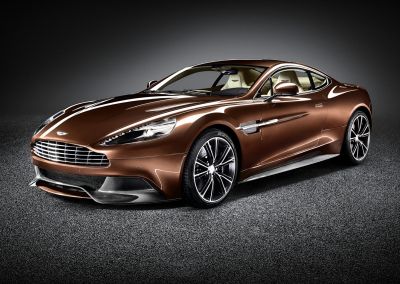
| Production: | 2016-2018 |
|---|---|
| Model Year: | 2017 |
| Length: | 4730 mm186.2 in |
| Width: | 2067 mm81.4 in |
| Height: | 1295 mm51.0 in |
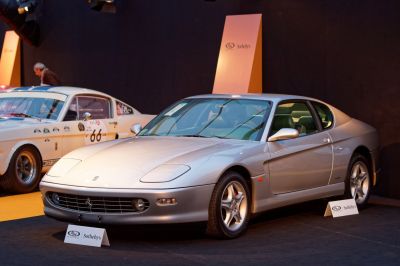
| Production: | 1998-2003 |
|---|---|
| Model Year: | 1998 |
| Length: | 4763 mm187.5 in |
| Width: | 1920 mm75.6 in |
| Height: | 1300 mm51.2 in |
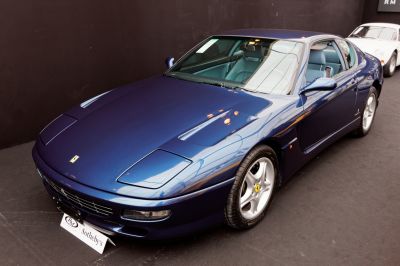
| Production: | 1993-1998 |
|---|---|
| Model Year: | 1992 |
| Length: | 4730 mm186.2 in |
| Width: | 1920 mm75.6 in |
| Height: | 1300 mm51.2 in |
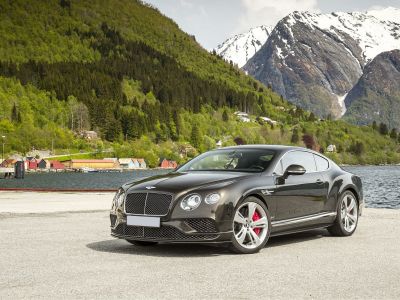
| Production: | 2015-2018 |
|---|---|
| Model Year: | 2015 |
| Length: | 4806-4950 mm189.2-194.9 in |
| Width: | 2227 mm87.7 in |
| Height: | 1350-1404 mm53.1-55.3 in |
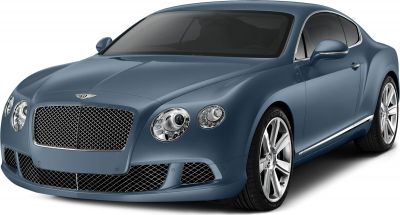
| Production: | 2011-2015 |
|---|---|
| Model Year: | 2011 |
| Length: | 4806-4950 mm189.2-194.9 in |
| Width: | 1944-2030 mm76.5-79.9 in |
| Height: | 1350-1404 mm53.1-55.3 in |
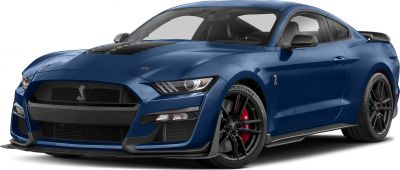
| Production: | 2016-present |
|---|---|
| Model Year: | 2016 |
| Length: | 4798-4831 mm188.9-190.2 in |
| Width: | 2080 mm81.9 in |
| Height: | 1361-1379 mm53.6-54.3 in |
